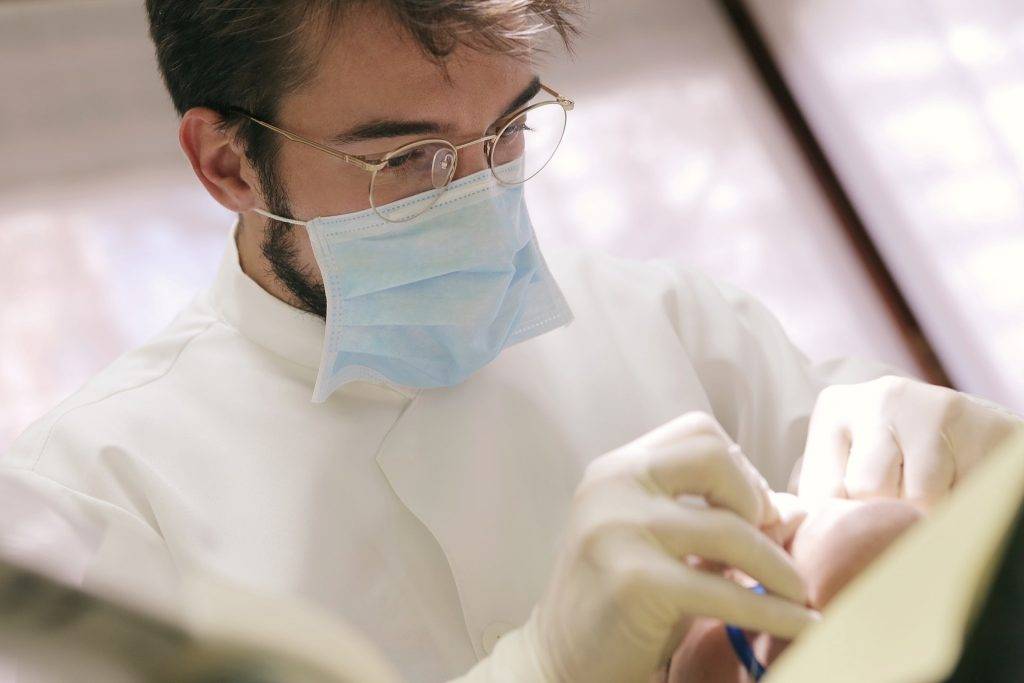Precious Knowledge About the Inside of Your Teeth
All dentists spend a considerable time in their university training learning about the inside of your teeth.
The inside of a tooth has a complicated hollow system which in normal health is the home of the pulp (nerves and blood vessels). These hollow areas are called root canal/s.
When we are concentrating on the inside of a teeth we talk about Endodontic treatment or Root Canal treatment. (‘Endo’ means inside and ‘odont’ is a tooth.)

What happens when the pulp or nerve inside the tooth 'dies' or you get an abscess?
When the pulp in the tooth is destroyed or “dies” the inside (pulp chamber or root canal) becomes empty or full of “dead” (necrotic) body fluids. Bacteria finds this space and starts to grow.
The body’s defense mechanisms can not remove the bacteria so an infection forms.
- Decay occurring close to the pulp
- Trauma (accidents)
- Irritation over an extended time

What's involved in root canal (endodontic) treatment?
Making the tooth comfortable
Placing a sheet of latex (or latex free) rubber over the tooth to keep the tooth clean and saliva free during treatment.
It may be necessary to remove any restorations (fillings or crowns) in teeth before the root canal treatment. This to attempt to seal out bacteria. Usually a temporary restoration (filling or crown) is placed in the tooth until the root canal treatment is completed. Then a final restoration will be placed in the tooth.
To find the root canals we drill through the biting surfaces of the back teeth and through the back of the front teeth.
Each tooth is unique. Teeth have differing numbers of root canals and different shapes. Research has show us the most common positions of canals and the most common numbers of canals and we even have some idea of the standard lengths of roots of teeth.
Tiny metal files are used to carefully clean the ‘gunk’ (pulp, bacteria, pus etc.) out of the root canals. These tiny metal files are used to shape the root canals to accept the filling material.
The canals are also washed with special liquids.
Root canals are cleaned, dried and then filled. The filling is aims to fill and seal the root canal so bacteria reentering the root canal. Different materials can be used for this. A common filling material is called “gutta percha” and it is cemented in the tooth.
Talk to Dentist at Surrey Hills if you’re worried about toothache or oral infections. You might just need a root canal treatment. Our friendly team and experienced dentists will be only too happy to examine your mouth and put you on the right path for pain-free oral health.
Why do I have pain if my tooth is "dead"
The cause of pain once a tooth ‘dies’ is the pressure, of the ‘dead’ contents of the inside of the tooth (consisting of dead pulp tissue, debris, and bacteria), on the surrounding bone and gums (periodontal ligament ) so the tooth often feels painful to touch yet may not be sensitive to changes in temperature. Symptoms most commonly associated with a ‘dead’ nerve are a tooth that hurts to bite on, becomes sore to touch or push on, and in acute stages facial swelling occurs.
Non-painful death!
Some people have pulp damage without any knowledge that there could be a problem. A dentist may discover a ‘dead’ tooth with radiographs or other signs in the gums around a dead tooth.
Why would we need to treat a dead tooth. Cant I just take antibiotics?
Antibiotics wont get rid of all the infection in a teeth. We now know how important it is to remove all infections as dental infections have been linked to heart attacks and strokes.


Completion of treatment
Possible complications of root canal treatment Please speak to us about any concerns you have with root canal treatment. All dental and medical treatment has risks and as an unique part of your unique makeup each tooth is different so not every complication can be listed.
- No guarantee of success
- In many cases the success rate has been shown to be approximately 90%. We do not always know until after treatment has been completed if it will be successful or not. Microscopic variations in the internal structure of each tooth contribute to the failure rate.
- Re-infection: if reinfection occurs the tooth may need retreatment either by the dentist or referral to the endodontist or extraction
- Breakage of files: during treatment very small specially engineered files are manipulated within the inside of the tooth. Occasionally these files break. Sometimes these file pieces can be left within the tooth indefinitely without any consequences. Sometimes they require specialist removal and occasionally the tooth treatment will be halted and the tooth removed.
- Fracture of the tooth: sometimes during treatment the tooth may fracture and need to be removed.